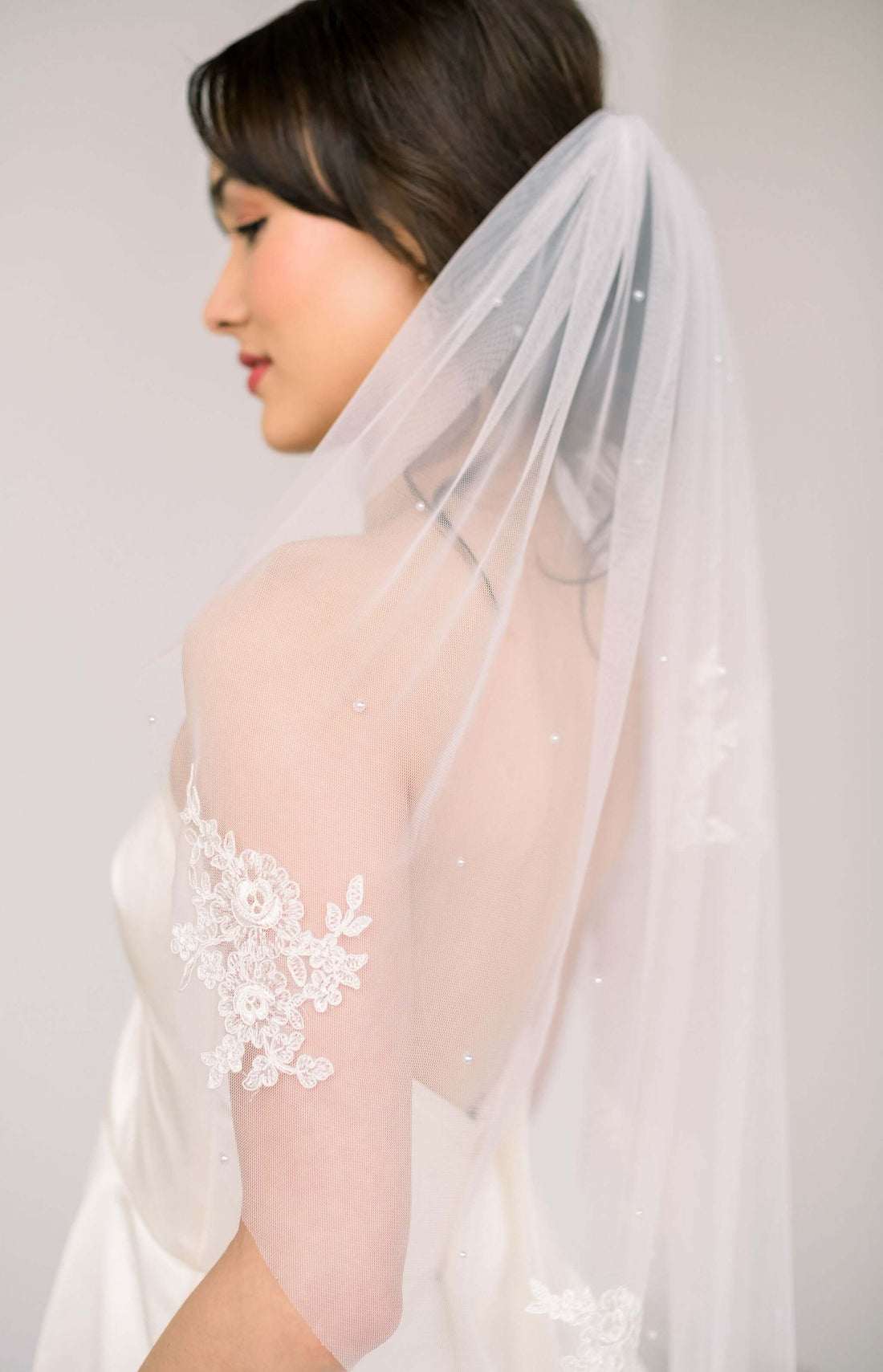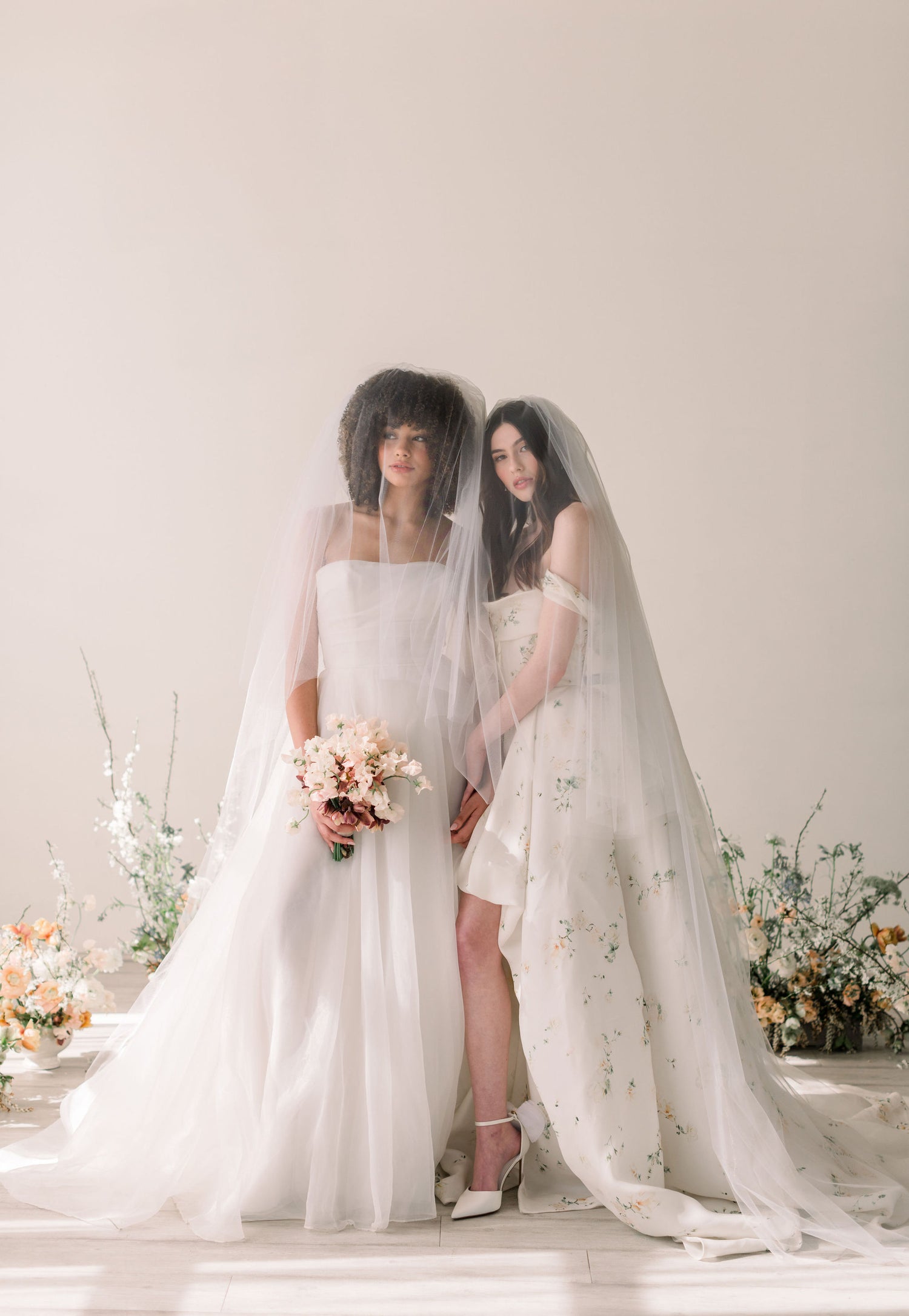
The Art of Veil Placement: Finding the Perfect Position for Your Wedding Veil
The wedding veil is an iconic accessory that adds a touch of romance and tradition to a bride's ensemble. One crucial aspect of wearing a veil is finding the perfect placement that complements your hairstyle, face shape, and overall bridal look. The right positioning can enhance your features, highlight your dress, and create a stunning visual impact. In this blog post, we will delve into the art of veil placement, offering tips and guidance to help you find the perfect position for your wedding veil.
Consult with Your Hairstylist: Before finalizing the placement of your veil, consult with your hairstylist. They have expertise in working with veils and can offer valuable insights based on your chosen hairstyle. Discuss your vision and preferences, and allow your hairstylist to guide you on the most flattering and secure placement options. Their knowledge will ensure that your veil seamlessly integrates with your hairstyle and stays in place throughout the day.
Consider Your Hairstyle: Different hairstyles call for different veil placements. For updos and bun hairstyles, veils are typically secured at the crown of the head or slightly above it, allowing the veil to cascade down the back. This placement creates an elegant and classic look. If you have chosen to wear your hair down, you can position the veil slightly higher on the head, allowing it to drape over your shoulders and blend effortlessly with your locks.
Face Shape Matters: Consider your face shape when deciding on the placement of your veil. Veils can be positioned to flatter and enhance your facial features. For example, if you have a round face, placing the veil higher on the head can create the illusion of length and balance. If you have an oval face shape, you have the flexibility to experiment with various placements. Square face shapes can benefit from a veil positioned slightly lower to soften the angles. Take your face shape into account to find the most flattering veil placement.
Match the Dress Details: Pay attention to the design elements of your wedding dress when deciding on the placement of your veil. If your dress has intricate back detailing or a statement train, consider placing the veil lower on the head to showcase those features. For dresses with embellishments around the neckline or shoulders, a higher veil placement can help highlight those details. Aim for a harmonious balance between your veil and dress to create a cohesive and visually appealing look.
Experiment and Seek Feedback: Don't be afraid to experiment with different veil placements during your dress fittings. Try positioning the veil at different heights and angles to see which one enhances your overall bridal look. Take photos from different angles and seek feedback from trusted friends, family, or your wedding planner. Their fresh perspective can provide valuable insights and help you make an informed decision about the best veil placement for your special day.
Secure the Veil Properly: Once you have determined the perfect veil placement, it's essential to secure it properly. Depending on your hairstyle and the weight of your veil, your hairstylist may use techniques like bobby pins, hair combs, or hairpins to ensure a secure hold. It's crucial to have a practice session before the wedding day to ensure the veil stays in place throughout the ceremony and any movements you make.
Finding the perfect placement for your wedding veil is an art that requires consideration of various factors, including your hairstyle, face shape, dress details, and personal preferences. Take the time to consult with your hairstylist, experiment with different placements, and seek feedback from trusted individuals. By paying attention to these details, you can achieve a veil placement that enhances your natural beauty, harmonizes with your overall bridal look, and creates a captivating and unforgettable impression as you walk down the aisle.

